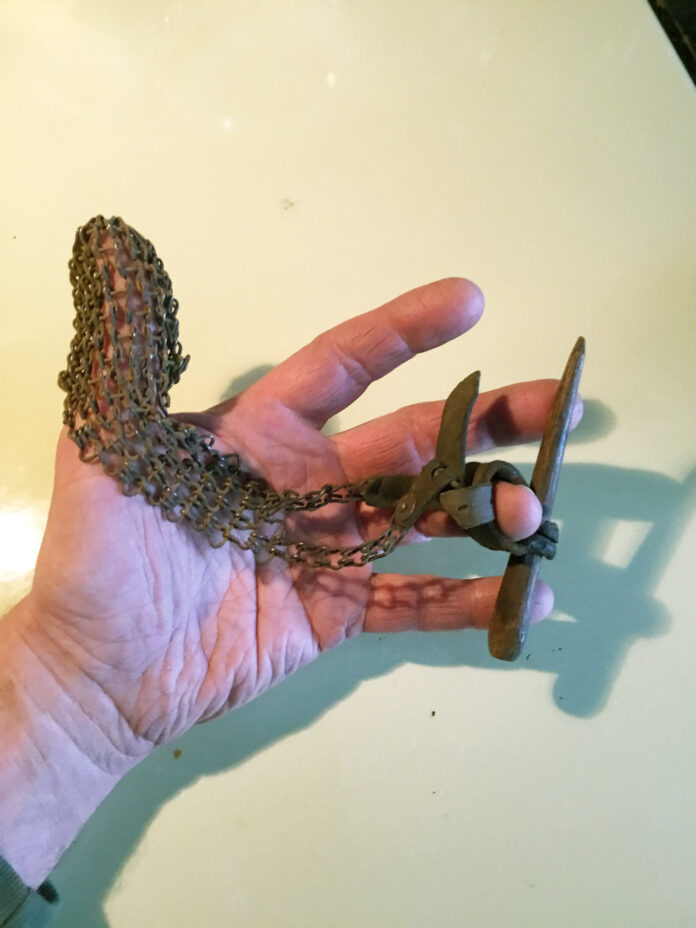Hello from Hazard!

We had several of our readers identify Item No. 1209 as a wire entrance drone guard for honeybees.
Renee Thomas, of Burton, Ohio, mailed us an excerpt from the 38th Edition of The ABC and XYC of Bee Culture, which explains how it works. Thanks, Renee!
“It would be fitted to the hive entrance, forcing honeybees to squeeze through it, knocking off excess pollen which could then be collected. It is primarily used as a dietary supplement. I remember Mom giving me some to eat when I started to get a sore throat. Pollen doesn’t taste great but also doesn’t taste bad,” Steve Johnston, New Wilmington, Pennsylvania, said.
“I was given one by an old beekeeper friend. He told me it was a swarm finder. He said you drizzle some honey inside on the wood. You close the back door, and you set it on a large limb in the woods or yard. The bees will come for the food and enter in through the funnel shaped cones on the bottom, and eat the honey. They won’t be able to exit the same way. When you see there are bees inside, you open up the back door and the bees will make a ‘beeline’ to the swarm or hive. Follow them, and if you lose the trail, drizzle more honey inside. They won’t be far away,” Dan Kerniskey, Eastlake, Ohio, said.
“The photo is difficult to see, but it is either a robbing screen, that keeps bees from other colonies from entering a weak colony and robbing the honey while at the same time allowing the inhabitants a way to come and go. Probably the circles are the way for the inside bees to come and go from the outside, while the bars across the front door are where the robbers are trying to get in because of the smell of the colony there. Or, it is a device to keep queens from leaving a hive when a colony swarms, thus stopping the swarm impulse from happening and reducing the population of the colony. It is placed on the front of a colony, on the outside of the front door. The bars are spaced such that workers can fit between, but the larger queen can’t, keeping her inside. Devices similar to this are still used by beekeepers, though now made of plastic and metal, rather than the wooden structure shown here,” Kim Flottum, said.

Dan Kerniskey, of Eastlake, Ohio bought Item No. 1210 at a hay trolley show. The seller had no idea what it was. It has a metal chain material that fits a thumb. The two chain lengths attach to a thin leather strap that is adjustable, and on the end is a wooden piece like a pencil the length of a finger.
Do you know what this item is and how it was used? Email us at editorial@farmanddairy.com; or by mail to: Hazard a Guess, c/o Farm and Dairy, P.O. Box 38, Salem, OH 44460.













